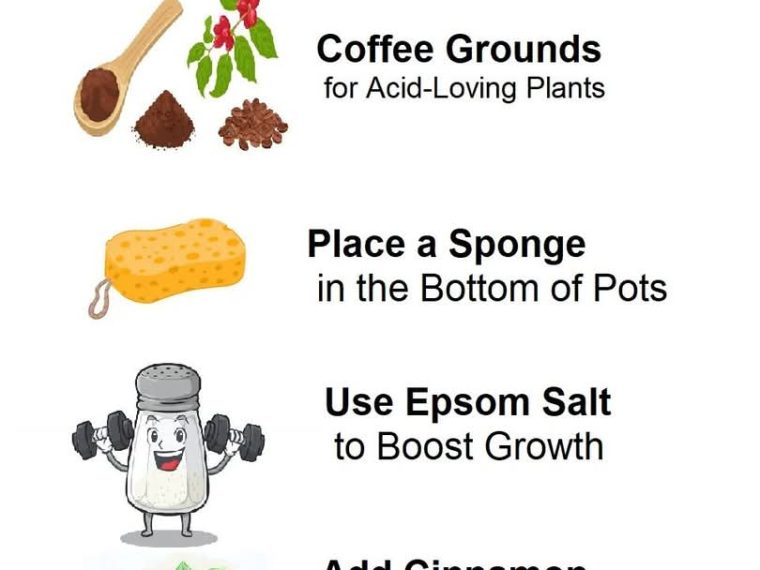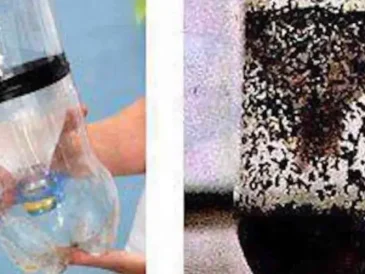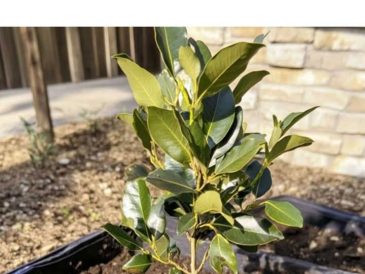The First 10 Hacks That Lay the Foundation for a Thriving Garden
Whether you have a large backyard or just a few pots on a balcony, gardening is both an art and a science. These tried-and-tested hacks will help you grow healthier plants, save money, and make the most of your green space—no matter the size or skill level.
Here are the first 10 genius gardening hacks you can start using today.
1. 🌱 Soak Seeds Before Planting
Many gardeners skip this simple step—but soaking seeds in warm water for 8–12 hours can speed up germination and increase sprouting success. It softens the seed coat and encourages quicker growth. Great for peas, beans, and morning glories.
2. 🐚 Use Crushed Eggshells for Calcium Boost
Eggshells are a natural, free source of calcium—essential for preventing blossom-end rot in tomatoes, peppers, and eggplants. Rinse, dry, crush, and sprinkle them around your plants or mix into the soil.
Bonus: They also deter slugs and snails!
3. ☕ Coffee Grounds for Acid-Loving Plants
Used coffee grounds enrich the soil with nitrogen and improve structure. They’re especially helpful for acid-loving plants like blueberries, azaleas, and hydrangeas.
Sprinkle lightly around the base or mix into compost for a nutrient-rich amendment.
4. 🥔 Grow Potatoes in a Trash Can or Bag
No room for a garden bed? No problem. Grow potatoes in a large plastic trash bin or grow bag. Start with 6 inches of soil, add seed potatoes, then gradually add soil as the plants grow. This vertical method saves space and produces a big harvest.
5. 🧽 Place a Sponge in the Bottom of Pots
Keep container plants hydrated longer by placing a clean kitchen sponge in the bottom of the pot before adding soil. It holds moisture and prevents water from draining out too quickly.
6. 🥒 Plant Companion Crops to Fight Pests
Nature has its own pest control system. Companion planting helps deter insects and boost plant growth. For example:
- Marigolds repel nematodes and aphids
- Basil improves the flavor of tomatoes and deters flies
- Nasturtiums act as trap crops for aphids
7. 🍌 Use Banana Peels as Slow-Release Fertilizer
Bury banana peels near the roots of roses, tomatoes, or peppers. As they decompose, they release potassium, phosphorus, and calcium, promoting healthy flowering and fruiting.
8. 🌾 Mulch with Grass Clippings
Don’t toss those grass clippings! Use them as mulch around your plants. They help retain moisture, suppress weeds, and feed the soil as they break down.
Just avoid using clippings from chemically treated lawns.
9. 💧 Water Plants With Rice or Pasta Water
The starchy water left over from cooking rice or pasta contains nutrients like iron, zinc, and phosphorus. Once cooled, use it to water your plants—it acts like a gentle, natural fertilizer.
10. 🧼 Use Soap Shavings to Deter Pests
Grate unscented bar soap and sprinkle the shavings around your garden beds. The scent confuses deer and rabbits, while also repelling insects like aphids and mites.
💡 Up Next: 10 More Advanced Hacks That Will Supercharge Your Garden
Click on page 2, where we’ll dig deeper into clever watering tricks, DIY fertilizers, propagation tips, and natural pest control solutions that will make your garden the envy of the neighborhood.
11. 🧂 Use Epsom Salt to Boost Growth
Epsom salt (magnesium sulfate) is a game-changer for tomatoes, peppers, and roses. Mix 1 tablespoon per gallon of water and apply every two weeks. It strengthens cell walls, improves nutrient uptake, and encourages flowering and fruiting.
Bonus: It also helps fix yellowing leaves caused by magnesium deficiency.
12. 🍶 DIY Organic Pesticide With Vinegar & Soap
Mix 1 cup vinegar, 1 tablespoon dish soap, and 3 cups water in a spray bottle for a natural, non-toxic insecticide. It’s effective against aphids, spider mites, and whiteflies.
Test a small area first to avoid burning sensitive plants.
13. 💦 Self-Watering System With Wine Bottles
Upcycle old wine bottles by filling them with water, then placing them upside down in the soil. The bottle will slowly release water as needed—perfect for vacation watering or thirsty summer plants.
14. ✂️ Propagate Cuttings in Honey
Dip fresh cuttings into raw honey before placing them in water or soil. Honey has natural antifungal and antibacterial properties that encourage root development. Works wonders for basil, mint, succulents, and houseplants.
15. 🐟 Bury a Fish Scraps for Tomatoes and Corn
This ancient technique dates back to Native American farming. Dig a hole and place a raw fish head or scraps beneath your planting spot. As it decomposes, it provides nitrogen, phosphorus, and trace minerals.
It’s a powerful, natural fertilizer—but bury deep to avoid attracting pests.
16. 🌬️ Add Cinnamon to Prevent Mold and Damping-Off
Sprinkle cinnamon powder on seedlings to prevent fungal diseases like damping-off—a common killer of baby plants. Cinnamon is a natural antifungal and also helps deter gnats.
17. 🌵 Repurpose Old Sponges for Succulent Drainage
Succulents hate soggy roots, but you can still keep them moist without rot. Layer cut-up sponges at the bottom of pots to absorb extra water and release it slowly. Ideal for small indoor pots.
18. 🍂 Leaf Mold: Black Gold for Your Soil
Rake fallen leaves into a pile, wet them, and let them decompose for 6–12 months. What you get is leaf mold—a rich, crumbly compost that improves soil structure and moisture retention.
It’s free, eco-friendly, and incredible for garden beds.
19. 🌼 Deadhead Flowers the Smart Way
Don’t just snip the faded blooms—cut down to the nearest leaf node or side bud. This encourages more blooms instead of wasting energy on seed production.
Regular deadheading = longer blooming season and more flowers.
20. 🪴 Rotate Crops in Containers Too
Even in container gardening, crop rotation matters. Don’t grow tomatoes in the same pot year after year—it can deplete the soil and increase disease risk. Rotate between leafy greens, root crops, and fruiting plants to keep soil balanced and healthy.
🌻 Final Thoughts
With these 20 clever gardening hacks, you’ll save time, money, and frustration—while enjoying a more vibrant, abundant, and resilient garden. From reusing kitchen scraps to creating homemade fertilizers and pest sprays, every tip brings you closer to mastering your green space.





